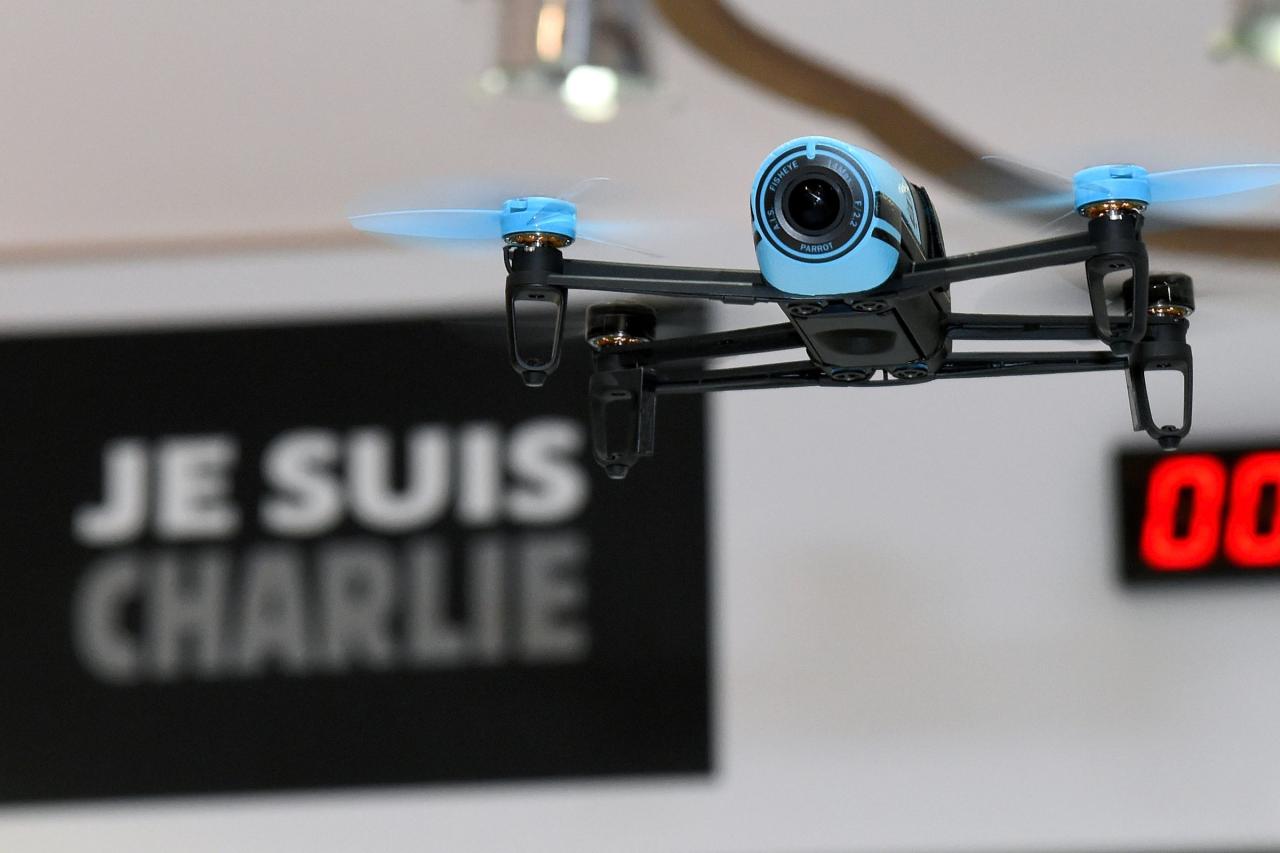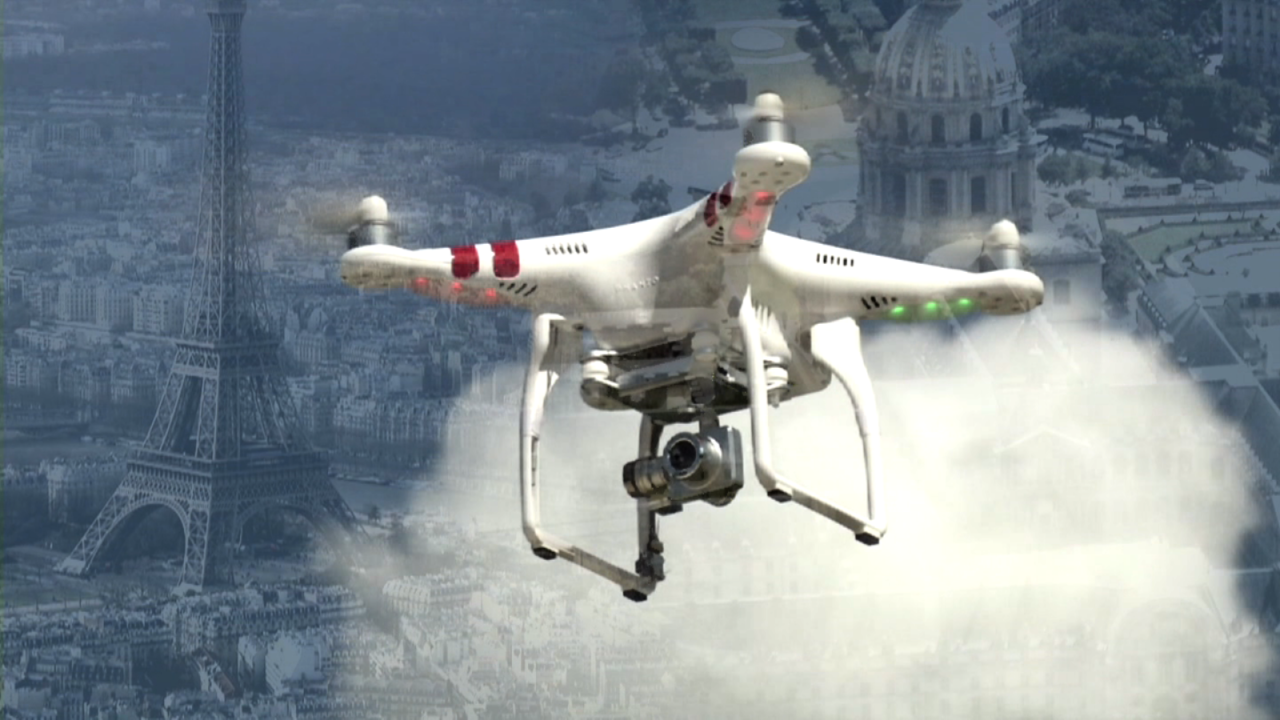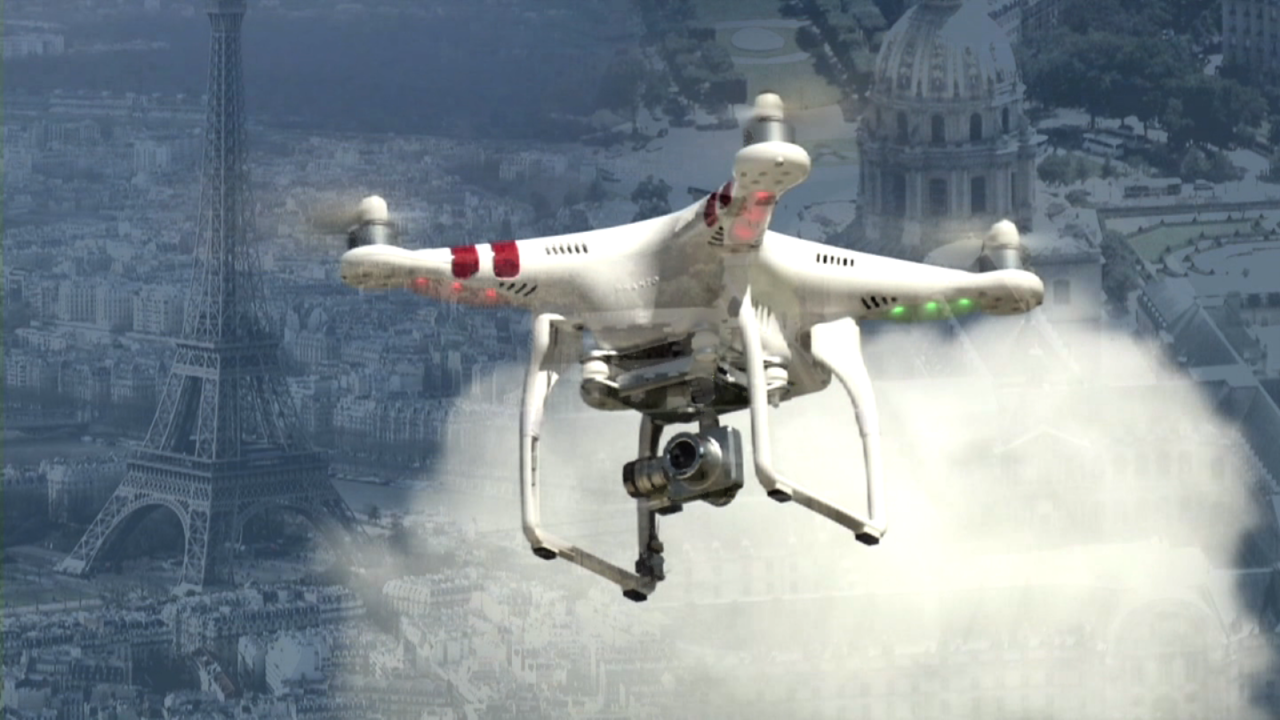Mystery Drone Paris: Imagine the Parisian skyline, suddenly punctuated by the silent, enigmatic flight of unknown drones. These unmanned aerial vehicles, defying explanation, have sparked a wave of speculation, from military exercises to rogue operators. This exploration delves into the reported sightings, examining their characteristics, locations, and potential explanations, while considering the public’s reaction and the challenges of investigation in a city as complex as Paris.
Reports detail drones of varying sizes and shapes, often exhibiting unusual flight patterns and emitting strange lights. Sightings have spanned several arrondissements, with inconsistencies in timing and descriptions fueling the mystery. The lack of clear attribution has led to a whirlwind of theories, ranging from harmless photography attempts to more sinister possibilities.
The Phenomenon

The appearance of unidentified drones in the Parisian skies has sparked considerable intrigue and speculation. These sightings, characterized by their unusual flight patterns and lack of clear identification, have defied easy explanation, leading to a range of theories from sophisticated pranks to more enigmatic possibilities. The events, while seemingly isolated, have generated significant media attention and raised questions about airspace security and the potential for unknown technological capabilities.
Mystery Drone Characteristics
Reports describe the drones as varying in size, with some described as small and others larger, though precise dimensions remain elusive due to the distance of observations and the often fleeting nature of the sightings. Their shape is also inconsistently reported, ranging from descriptions of standard quadcopter designs to more unusual, elongated forms. The drones’ lighting is a key feature, often described as bright, pulsing lights of various colors, sometimes seemingly coordinated in their movements.
Flight patterns are described as erratic, unpredictable, and sometimes remarkably silent, adding to the mystery surrounding their origin and purpose.
Locations of Drone Sightings
Sightings have been reported across various locations within Paris, suggesting a lack of specific targeting or geographical constraint. Areas reported include the Eiffel Tower vicinity, the Louvre Museum, and several prominent residential districts. The widespread nature of the sightings further complicates efforts to determine a central point of origin or operational base.
Chronological Summary of Sightings
Precise chronological data is difficult to compile due to the inconsistent reporting across various news outlets and social media. However, available information suggests a cluster of sightings occurred over a period of several weeks, with reported events often spaced several days apart. This intermittent nature of the sightings makes it difficult to establish a clear pattern or predict future occurrences.
Inconsistencies in reported times and dates also exist, highlighting the challenges in accurately documenting the phenomenon.
| Date | Location | Description | Source |
|---|---|---|---|
| October 26, 2023 (approx.) | Eiffel Tower area | Small, dark drone with pulsing red light; erratic flight pattern. | Social media reports |
| November 5, 2023 (approx.) | Louvre Museum vicinity | Larger drone, described as elongated shape, with bright white and blue lights; silent flight. | News article, Le Parisien |
| November 12, 2023 (approx.) | 16th arrondissement | Multiple small drones observed in formation; flashing green lights. | Citizen reports to police |
Potential Explanations
The mysterious drone sightings over Paris present a puzzle with several possible solutions. While the “Phenomenon” itself is established, understanding its cause requires exploring various plausible scenarios, ranging from mundane to more extraordinary possibilities. Let’s examine some potential explanations for the observed drone activity.
Military Exercises or Testing
The possibility of military exercises or technological testing conducted by French or allied forces cannot be dismissed. Advanced military drones are capable of highly sophisticated flight maneuvers, potentially mimicking the unusual patterns observed. These exercises might be conducted at night or in low-visibility conditions to maintain secrecy and test operational capabilities in challenging environments. For example, the French military has been known to test new surveillance technologies and drone capabilities near major urban areas, albeit with strict protocols and notifications to relevant authorities.
Such exercises could unintentionally lead to public sightings or misinterpretations, particularly if information regarding the operations isn’t publicly released.
Unauthorized Drone Usage for Photography or Surveillance
The proliferation of commercially available drones has made unauthorized aerial photography and surveillance relatively easy. A skilled operator might have used a high-performance drone with advanced flight capabilities to capture unique perspectives of Parisian landmarks or engage in clandestine surveillance. The unusual flight patterns could be the result of the operator attempting to avoid detection or to obtain specific vantage points.
This scenario is plausible given the ease of acquiring advanced drones and the potential lack of robust monitoring systems to prevent such activities in the airspace above Paris. Consider, for instance, the increasing number of instances where drones have been used illegally to film concerts or private events, demonstrating the potential for such activity in a larger urban setting.
Advanced Drone Technology and Unusual Flight Patterns
The observed drone movements may be explained by advancements in drone technology. Features like autonomous navigation, sophisticated obstacle avoidance systems, and advanced flight control algorithms allow for complex and unpredictable flight paths. Drones equipped with AI-powered flight planning software might exhibit behaviors that appear unusual to untrained observers. Imagine, for example, a drone programmed to mimic the flight patterns of birds, or a drone utilizing advanced terrain-following algorithms to navigate through complex urban environments.
These capabilities could lead to seemingly erratic or inexplicable flight patterns. Furthermore, swarm technology, where multiple drones coordinate their movements, could also create complex and unpredictable aerial displays.
Rogue Drone Operator with Malicious Intent
A final, concerning scenario involves a rogue drone operator with malicious intent. This operator could be attempting to cause disruption, spread fear, or even engage in more serious criminal activities. The unusual flight patterns might be a deliberate tactic to confuse authorities or to create a spectacle. For example, the drone could be equipped with countermeasures to hinder detection or even carry a payload for a specific purpose.
This scenario requires a sophisticated level of technical expertise and a high degree of risk-taking on the part of the operator, but it remains a possibility that should not be overlooked, especially in light of increasing concerns about drone-related security threats in major cities worldwide.
Investigative Approaches

Unraveling the mystery of the Paris drones requires a multi-pronged investigative approach, combining technological expertise with meticulous analysis of available evidence. Success hinges on efficiently gathering and interpreting data from various sources to pinpoint the drones’ origins, flight paths, and ultimately, their operators.Tracking the drones’ origins and flight paths presents a significant challenge, yet several methods could prove effective.
The investigation must consider both technological and human factors.
Drone Tracking Technologies
Several technologies could assist in tracking the drones. Advanced radar systems, capable of detecting even small unmanned aerial vehicles (UAVs), could be deployed to map flight paths and potentially identify launch points. Cellular triangulation, if the drones utilize cellular communication, could pinpoint their location at specific times. Furthermore, analyzing the drones’ flight data recorders, if recovered, would provide invaluable information regarding their flight paths, altitude, and other operational parameters.
Ever wondered about those unexplained drone sightings over Paris? It’s a real head-scratcher, right? Check out this article for some insights on the mystery drone Paris situation; it dives into possible explanations and ongoing investigations. Hopefully, we’ll get to the bottom of these mysterious Parisian drone flights soon!
The success of these methods depends heavily on the drones’ technology and the availability of suitable infrastructure. For instance, a system similar to ADS-B (Automatic Dependent Surveillance-Broadcast), commonly used for tracking aircraft, could be adapted for drone tracking if the drones broadcast their location.
Drone Interception and Disablement, Mystery drone paris
Interception and disablement of the drones present another layer of complexity. Jamming technology could disrupt the drones’ communication signals, forcing them to land or return to their origin point. However, this approach carries risks, potentially affecting other electronic devices in the vicinity. Netting systems, deployed strategically, could physically capture the drones. Alternatively, specialized software could be developed to exploit vulnerabilities in the drones’ control systems, allowing for remote disabling.
The feasibility of each method is contingent upon the drones’ specific design and capabilities, as well as the available counter-drone technology. For example, a system using directed energy weapons, such as lasers, might be effective against smaller drones, but would require careful control to avoid collateral damage.
Challenges of Urban vs. Rural Investigation
Investigating drone sightings in a densely populated city like Paris presents unique challenges compared to less populated areas. The high density of buildings, electronic interference, and the sheer volume of air traffic complicate tracking and interception efforts. The risk of collateral damage from any intervention is significantly higher. In contrast, investigations in rural areas benefit from clearer airspace, reduced electronic interference, and lower population density, simplifying tracking and potentially allowing for more aggressive interception strategies.
The effectiveness of various tracking and interception technologies will be greatly influenced by the environment. For instance, the effectiveness of visual tracking is significantly reduced in dense urban environments compared to open fields.
Analysis of Video Footage and Eyewitness Accounts
Analyzing video footage and eyewitness accounts is crucial in reconstructing the events. High-resolution video recordings, if available, can be analyzed to identify drone characteristics, flight patterns, and potential launch or landing sites. Eyewitness testimonies, when corroborated and cross-referenced, can provide valuable context and details, helping to narrow down the search area and refine the investigation’s focus. Careful examination of video evidence, for example, could reveal identifying marks or logos on the drones themselves, leading to the manufacturer or owner.
The reliability of eyewitness accounts, however, needs to be carefully assessed, as human memory and perception can be unreliable. Triangulating information from multiple sources is crucial to obtain a reliable picture of the events.
Public Reaction and Media Coverage

The mystery drone sightings over Paris sparked a wide range of reactions from the public, ranging from fascination and amusement to fear and speculation. Social media played a significant role in amplifying these reactions and shaping the narrative surrounding the event. The media coverage, while initially fragmented, quickly coalesced into a major news story, drawing comparisons to similar incidents in other global cities.
Public Response to Drone Sightings
Initial reactions were largely characterized by a mixture of awe and confusion. Videos and photos of the drones quickly circulated online, generating intense discussion and debate. Many people expressed a sense of wonder and fascination at the spectacle, while others voiced concerns about national security and the potential for malicious intent. There were also reports of some individuals feeling a sense of unease or even fear due to the unknown nature of the drones and their seemingly coordinated movements.
Online forums and social media platforms became hubs for sharing eyewitness accounts, speculation, and conspiracy theories. The lack of official information initially fueled public anxiety, with many expressing frustration at the government’s perceived lack of transparency.
Social Media’s Role in Information Dissemination
Social media platforms, including Twitter, Instagram, and Facebook, were instrumental in spreading news and speculation about the drone sightings. Hashtags related to the event quickly trended, facilitating the rapid exchange of information, images, and videos. This rapid dissemination of information, however, also led to the spread of misinformation and unsubstantiated claims. Many users shared amateur videos and photos, often without verifying their authenticity, contributing to the proliferation of rumors and conspiracy theories.
Ever wonder about those unexplained drone sightings over Paris? It’s a pretty wild story, right? Check out this article for the lowdown on the whole “mystery drone Paris” situation: mystery drone paris. It dives into the speculation, the official responses, and everything in between – it’s a real head-scratcher! The mystery drone Paris saga is definitely one for the books.
The lack of a central, authoritative source of information allowed various narratives to emerge and compete for attention. The event highlighted the double-edged sword of social media in crisis communication: its ability to quickly spread information contrasted with its vulnerability to the spread of misinformation.
Comparison to Similar Incidents
The Paris drone incident drew immediate comparisons to similar events in other major cities around the world. For instance, the numerous drone sightings over airports and other sensitive locations in various countries over recent years led to discussions about the increasing vulnerability of airspace to unauthorized drone activity. Media coverage often highlighted the challenges faced by authorities in responding to these incidents, particularly in terms of identification, tracking, and neutralization of rogue drones.
The Paris event served as a reminder of the need for improved counter-drone technologies and regulations to prevent future disruptions. The media also drew parallels to other unexplained aerial phenomena, although these comparisons were largely speculative and lacked concrete evidence linking the incidents.
Timeline of Media Reports and Public Reactions
A detailed timeline would require access to specific media archives and social media data. However, a general Artikel can be constructed. The initial sightings sparked immediate social media buzz. Within hours, major news outlets began reporting on the event, often relying on eyewitness accounts and social media posts for initial information. As the event unfolded, official statements from government agencies became more frequent, though often limited in detail.
That whole mystery drone thing in Paris got everyone buzzing, right? It makes you wonder about the future of airspace, especially with companies like Amazon expanding their drone delivery network. Check out this map showing current amazon drone delivery locations to see how widespread their operations are becoming. Perhaps those Paris drones were just early adopters of a new delivery system!
The timeline would show a gradual shift from initial speculation and fear to a more informed, though still uncertain, public understanding as investigations progressed. The media’s narrative evolved from initial reports focusing on the mystery of the drones to later reports focusing on investigative efforts and potential explanations. The public’s interest remained high throughout, with sustained engagement on social media even after initial news coverage subsided.
Illustrative Examples
To better understand the potential nature of the Parisian drone sightings, let’s visualize some possibilities based on reported characteristics. These examples are hypothetical reconstructions, aiming to provide a clearer picture of what the drones might have looked like, how they might have moved, and how they might have interacted with the city’s landmarks.
Possible Drone Design
A plausible drone design consistent with witness accounts might be a relatively large, stealthy unmanned aerial vehicle (UAV). Imagine a roughly rectangular drone, approximately 2 meters long, 1.5 meters wide, and 0.5 meters high. The body could be constructed from a dark, matte-finished carbon fiber composite material, minimizing its visibility against the night sky. The propulsion system would likely consist of eight smaller, distributed electric rotors, providing redundancy and enhanced maneuverability.
These rotors could be shrouded to further reduce noise and visual detection. The drone would likely be equipped with advanced sensors, including high-resolution cameras, infrared sensors, and possibly even GPS jamming capabilities, explaining the difficulty in tracking them. Such a design would be relatively quiet, agile, and difficult to identify visually.
Hypothetical Flight Path
A possible flight path could involve multiple drones moving in a coordinated pattern over several iconic Parisian landmarks. Let’s consider a scenario beginning at 11:00 PM on a clear night. The drones could start near the Eiffel Tower, circling it at a high altitude (around 500 meters) for approximately 15 minutes. Then, they could move in a coordinated formation towards the Louvre Museum, arriving at 11:30 PM, maintaining a similar altitude.
After another 15-minute period of seemingly random maneuvers around the Louvre’s glass pyramid, they could proceed to Notre Dame Cathedral, reaching it around 12:00 AM, again circling it at a high altitude before disappearing from view near the Seine River around 12:15 AM. This flight path would account for multiple sightings across the city, creating confusion and speculation.
Drone Interaction with Landmark: A Hypothetical Scenario
Imagine a scene at 11:45 PM near the Louvre Pyramid. The atmospheric conditions are clear, with minimal light pollution. Three drones, as described above, approach the pyramid from different angles, illuminated only by the faint glow of the city lights. They maintain a relatively low altitude, approximately 100 meters above the ground. The drones move in a synchronized, almost balletic, pattern, their dark silhouettes briefly eclipsing the illuminated pyramid.
The scene is both mesmerizing and unsettling, a silent interaction between advanced technology and a historical monument. The low lighting and the drones’ dark coloring would make it difficult to obtain clear photographic evidence, contributing to the mystery.
Final Conclusion: Mystery Drone Paris
The mystery surrounding the Paris drone sightings remains unsolved, highlighting the complexities of investigating such incidents in a densely populated urban environment. While several plausible explanations exist, the lack of definitive proof leaves room for continued speculation and underscores the need for improved drone tracking and identification technologies. The event serves as a stark reminder of the challenges posed by unregulated drone usage and the potential for both mischief and more serious security concerns.
FAQ Insights
What types of drones were reportedly sighted?
Reports vary, describing drones of different sizes, shapes, and light configurations. No consistent model has been identified.
Were any damages or injuries reported?
No reports of damage or injuries directly linked to the drones have surfaced.
Has the French government commented officially?
Official statements have been limited, often focusing on the ongoing investigation and the need for responsible drone operation.
What is the likelihood of a malicious intent?
While a possibility, there’s no concrete evidence to support this theory. Many explanations are plausible.
